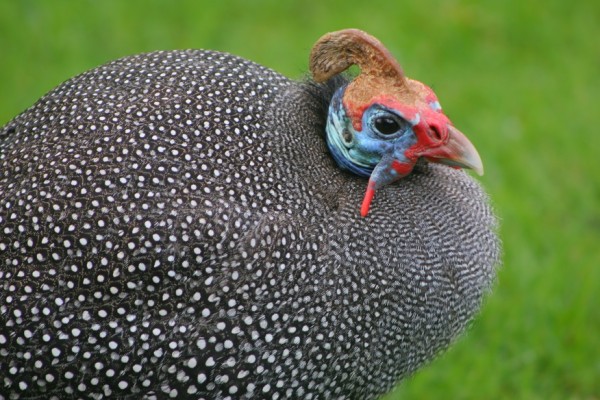Poppy Seeds Reveal how Dinosaur Tracks were Made
| Ana Verayo | | Dec 10, 2014 09:11 AM EST |
(Photo : Wikimedia) Scientists used guineafowl tracks to simulate how dinosaur tracks were made.
Researchers have used a guineafowl to advance their knowledge of how dinosaurs probably walked. More precisely, they used an x-ray machine to record how the bird walked along a track covered in millions of poppy seeds.
Experts from the Royal Veterinary College in London working with colleagues from Brown University used these X-rays to produce a video of the bird walking through a long hollow channel filled with poppy seeds to build a 3D model of the bird's tracks.
Like Us on Facebook
Ancient dinosaur footprints have always been quite a challenge for scientists to study since little is known about the interaction of the animal's foot with the substrate (or the surface where the footprint is made) that can be anything from sand, clay or mud. A substrate can also be hard or flat, porous and even cause deformities.
Footprints on any soft substrate can be well preserved, however. But they can also be just as complex to study since the process involves the foot of the creature sinking deeper than it should thus producing an inaccurate idea of the size or type of dinosaur that made it.
Researchers Peter Falkingham and Stephen Gatesy used the guineafowl to stand in for a similar sized dinosaur called Corvipes lacertoideus that apparently left some tracks on sediment some 250 million years ago in northeastern U.S.A.
Researchers could have chosen any kind of bird species but admitted their choice of the guinea fowl was random. Birds are considered direct descendants of dinosaurs.
According to Falkingham, the study's lead author, the guineafowl just happened to be both available at the time and fitted perfectly into the X-ray machine.
As the researchers filled a long trough with poppy seeds to simulate sand, X-ray video equipment captured images of the bird's body and skeletal system, along with the movement of the seeds as the bird walked through them.
This video is the first time the process of making dinosaur footprints were captured, said Falkingham.
Although the bird left unremarkable footprints on the surface of the seeds, visible prints half an inch below the surface were seen on the X-ray images. These footprints do not represent the exact shape of the bird's feet since it spread its toes when it stepped forward.
Scientists now have a clearer idea how this pattern created well preserved dinosaur tracks. The findings can help paleontologists reconstruct the ancient movement of dinosaurs.
TagsBird X-Rays Reveal How Dinosaur Tracks Were Made, guinea fowl, dinosaur tracks, dinosaur footprints, how dinosaur footprints are made, bird x-ray video dinosaur tracks footprints
©2015 Chinatopix All rights reserved. Do not reproduce without permission
EDITOR'S PICKS
-

Did the Trump administration just announce plans for a trade war with ‘hostile’ China and Russia?
-

US Senate passes Taiwan travel bill slammed by China
-

As Yan Sihong’s family grieves, here are other Chinese students who went missing abroad. Some have never been found
-

Beijing blasts Western critics who ‘smear China’ with the term sharp power
-

China Envoy Seeks to Defuse Tensions With U.S. as a Trade War Brews
-

Singapore's Deputy PM Provides Bitcoin Vote of Confidence Amid China's Blanket Bans
-

China warns investors over risks in overseas virtual currency trading
-

Chinese government most trustworthy: survey
-

Kashima Antlers On Course For Back-To-Back Titles
MOST POPULAR
LATEST NEWS
Zhou Yongkang: China's Former Security Chief Sentenced to Life in Prison

China's former Chief of the Ministry of Public Security, Zhou Yongkang, has been given a life sentence after he was found guilty of abusing his office, bribery and deliberately ... Full Article
TRENDING STORY

China Pork Prices Expected to Stabilize As The Supplies Recover

Elephone P9000 Smartphone is now on Sale on Amazon India

There's a Big Chance Cliffhangers Won't Still Be Resolved When Grey's Anatomy Season 13 Returns

Supreme Court Ruled on Samsung vs Apple Dispute for Patent Infringement

Microsoft Surface Pro 5 Rumors and Release Date: What is the Latest?










